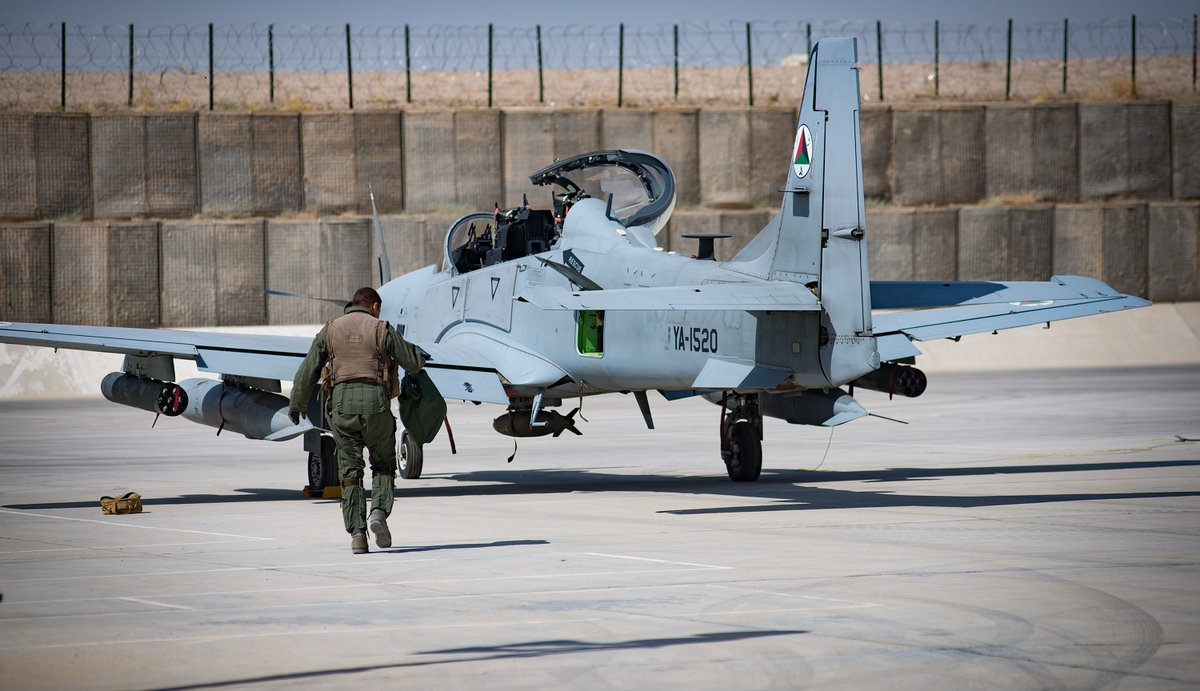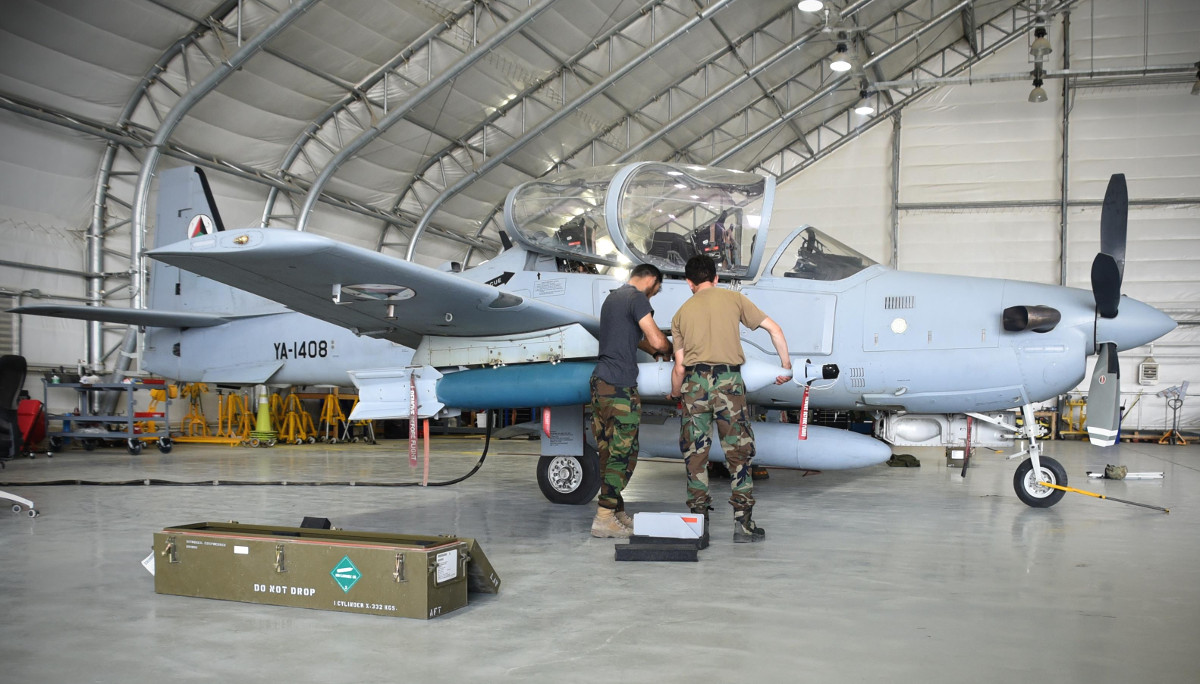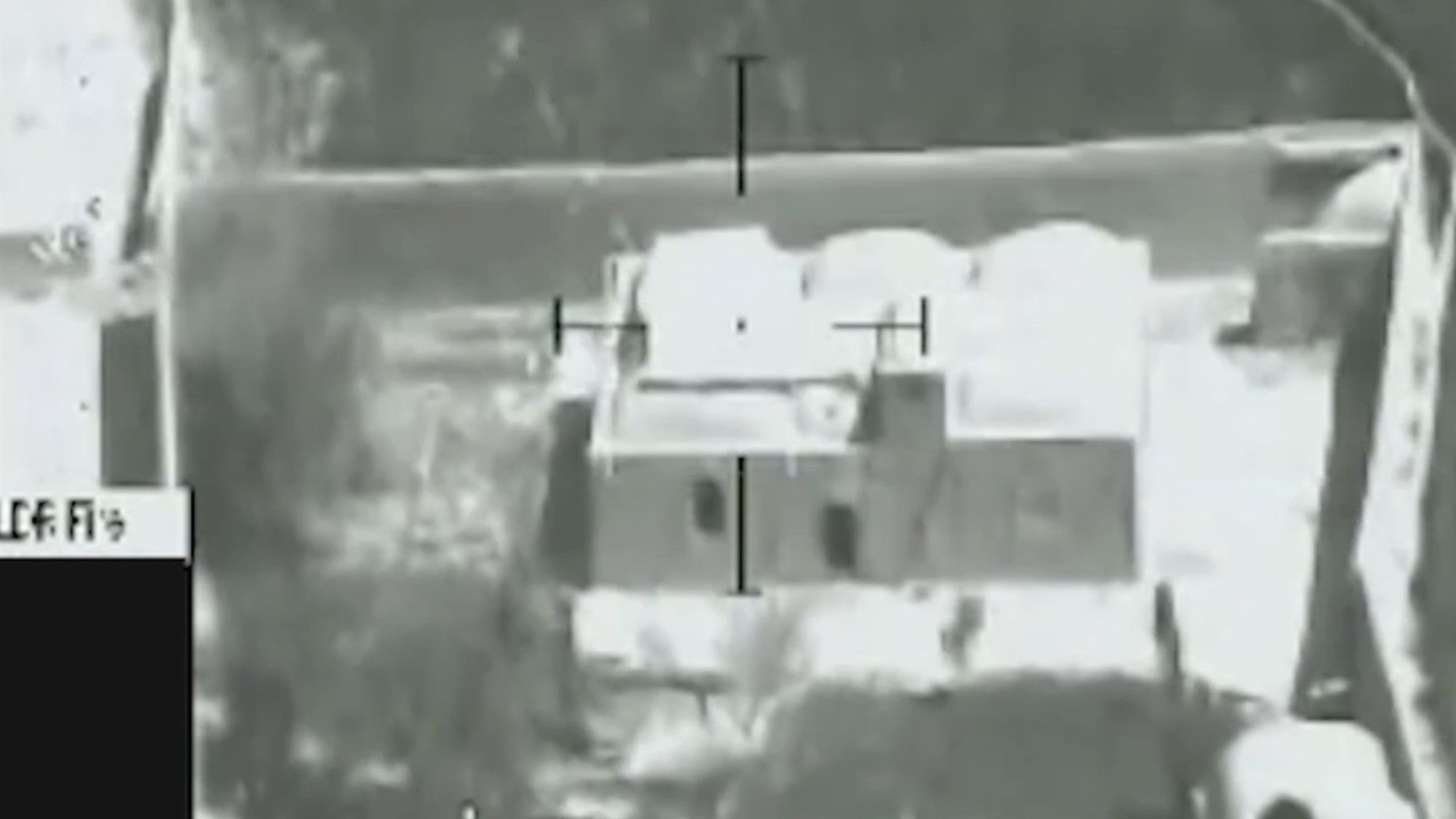One of the Afghan Air Force’s A-29 Super Tucano light attack aircraft has finally dropped a laser-guided bomb in combat. That the pilot chose to employ a precision weapon for fear of hitting nearby civilians underscores the importance of the capability, despite the NATO-led international coalition continuing to downplay its significance, even as it celebrates this achievement.
On March 22, 2018, an A-29 from the Kabul Air Wing’s detachment at Kandahar Airfield dropped a pair of GBU-58/B 250-pound class Paveway series laser-guided bombs on a Taliban-controlled compound in the country’s western Farah province. The plane was reportedly carrying unguided Mk 81 bombs, as well. Crews only began training to employ the weapons in December 2017, a detail that the War Zone was first to report.

“The Afghan pilots have learned their trade during combat and our advisors have expanded their skills in a deliberate step by step approach,” U.S. Air Force Brigadier General Phillip Stewart, the American officer commander in charge of NATO’s Train Advise, Assist Command-Air (TAAC-A), said in a statement. “This recent laser guided bomb strike is an example of the success of the AAF and TAAC-Air’s efforts.”

To be sure, the ability of Afghanistan’s A-29 crews to drop GBU-58/Bs on the Taliban is an important development. It’s an essential capability for exactly these sorts of situations in which a less precise weapon could pose a serious risk to innocent bystanders.
The same benefits apply in instances where friendly forces find themselves dangerously close to the enemy. These issues are only magnified in populated areas, where it might be especially difficult to easily separate hostile personnel from civilians over the course of a fluid battle. The laser-guided bombs also offer the aircraft a way to precisely attack moving targets.
On top of that, the ability for Afghan Super Tucanos to employ laser-guided bombs also means that they may finally be able to use the aircraft’s own sensor turret or actively coordinate with other suitable equipped aircraft, manned or unmanned, or troops on the ground to designate the target. Combined with training to fly with the aid of night-vision goggles, this capability is essential to be able to operate at night when insurgents and terrorists are typically most active.
But as significant as this achievement might be, it has now created something of a rhetorical trap for the NATO-led coalition, also known as the Resolute Support Mission. In December 2017, when the Afghan Air Force still had yet to employ a precision guided munition in combat, officials insisted that this wasn’t an issue since Afghan pilots were capable of being as accurate as they needed to be with unguided bombs. They are compelled to make the same arguments now, even as they laud this milestone.

“The AAF has demonstrated again and again that their pilots, using the A-29 and the skills they have learned from our advisors and perfected through combat experience, that they can drop non-precision weapons within 10 meters [approximately 11 yards] of their targets,” Brigadier General Phillip Stewart said. “There are certain targets that require laser guided bombs and the AAF has shown it can accomplish that task now as well.”
This assertion seemed questionable before and seems even more so now. In the strike video the Resolute Support Mission released along with its announcement, seen above, the enclosure with the target building, which sits entirely by itself, appears to be easily longer than 12 yards across. When the bomb hits, the entire walled compound is filled with smoke and dust. The civilians the pilot or personnel on the ground were worried about hitting were unlikely to have been inside at the time.
And yet the pilot still elected to drop a precision guided bomb on the target rather than test their ability to place an unguided bomb in the right place. It can only call into question how reliably Afghan Super Tucano crews are actually able to meet that 11 yard standard of accuracy and how much this may have impacted the scope and effectiveness of their operations since 2016 when the first planes arrived in country.

Per NATO’s own statistics, Afghan A-29s aborted nearly one out of every five attack runs between April and December 2016 over concerns about hitting innocent civilians or friendly troops, or just not being able to positively identify the target at all. That discretion is commendable, but it might not have been necessary had they been able to use GBU-58/Bs at the time.
There’s no additional information about whether the inability to follow through with those strikes allowed the enemy to escape or could have translated to additional friendly casualties, either. The Afghan Army, as well as the country’s various police forces, has consistently had worryingly high casualty rates in general.
If the A-29’s precision guided muntions capability was so irrelevant, it also worth asking why the U.S.-backed Afghan Aviation Transition Plan includes the procurement of nearly three dozen AC-208 Eliminators with the ability to fire 2.75-inch Advanced Precision Kill Weapon System II (APKWS II) laser-guided rockets. Afghanistan is set to get the first three of these aircraft, which will also have a sensor turret with electro-optical and infrared cameras and a laser designator, in 2018.

The truth is, as it has always been, that dumb bombs, no matter how accurate their employment might be, are simply no substitute for precision guided munitions or the kind of capabilities they offer. It’s a capability the Afghan Air Force could definitely have benefited from in the past two years and it remains unclear how many aircraft are capable of employing laser-guided bombs and how many crews are qualified to do so at present.
None of this is perhaps surprising given the conclusions of a damning review the Department of Defense’s own top watchdog released in January 2018 that criticized almost every major aspect of the TAAC-A operation. The advisers “could not measure the Afghan Air Force’s progress towards a defined end-state specifying the intended set of Afghan Air Force capabilities,” according to the report.
The NATO coalition continues to highlight growing the Afghan Air Force’s size and capabilities as essential to curtailing Taliban gains across the country and perhaps finding some sort of end state for an increasingly intractable conflict. Based on
available evidence, it seems like the service and its foreign advisers still have a long way to go in their efforts to craft a functional air arm that can realistically take any of the pressure off American airpower in the country.
At least the crews of Afghan Air Force’s A-29s may now increasingly have the option to drop laser-guided bombs on their targets, nearly three years after they first began flying the aircraft in combat.
Contact the author: jtrevithickpr@gmail.com
